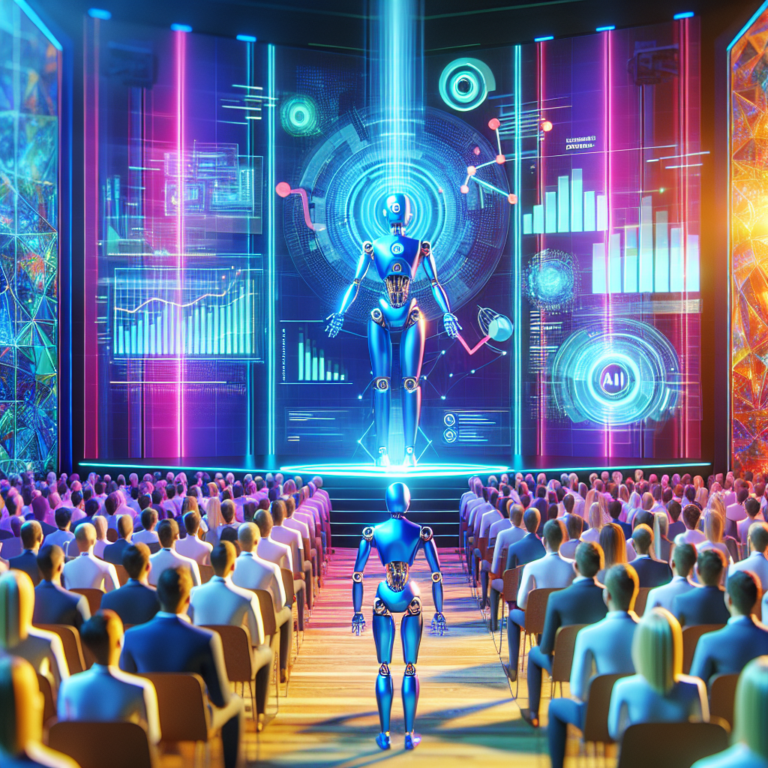Nvidia GTC 2025: Unveiling a 40x Nvidia AI Performance Leap and Open-Source Innovations 🚀
Nvidia’s GTC 2025 conference was a landmark event for the AI industry, showcasing groundbreaking innovations that solidify Nvidia’s leadership in artificial intelligence, robotics, and high-performance computing. CEO Jensen Huang’s keynote address highlighted Nvidia’s strategic vision for the future of AI, emphasizing significant advancements in hardware, software, and robotics. Here are the key takeaways from GTC 2025, focusing on Nvidia’s Nvidia AI Performance Leap, open-source innovations, and its expanding role in robotics and autonomous vehicles.
40x Nvidia AI Performance Leap with Blackwell Platform
One of the most striking announcements at GTC 2025 was the full production rollout of Nvidia’s Blackwell platform, which achieves a remarkable 40-fold performance gain over its predecessor, Hopper. This significant Nvidia AI Performance Leap is crucial for inference workloads, particularly as AI models evolve to include more complex reasoning capabilities. Huang emphasized that the Blackwell platform, combined with Nvidia’s Dynamo software, delivers 40 times the AI factory performance of Hopper, making it an indispensable tool for powering reasoning AI models that demand substantial computational resources.
Addressing Market Challenges
The announcement comes at a time when Nvidia faces market challenges, including competition from efficient AI models. However, Huang reframed these challenges as opportunities, highlighting that more efficient models will drive greater overall computation as AI reasoning expands. This strategic positioning aims to turn potential weaknesses into strengths by emphasizing the increased demand for computational power.
Next-Generation AI Infrastructure Roadmap
Nvidia unveiled a detailed multi-year roadmap for its AI computing infrastructure, extending through 2027. This roadmap includes:
- Blackwell Ultra (H2 2025): Offers a 1.5x Nvidia AI Performance Leap over current Blackwell chips.
- Vera Rubin (H2 2026): Features a new CPU twice as fast as the current Grace CPU, along with enhanced networking and memory systems.
- Vera Rubin Ultra (H2 2027): Represents an extreme scale-up, providing 14 times more computational power than current systems.
This roadmap provides unprecedented transparency for customers, allowing them to plan their AI infrastructure investments with confidence.
Open-Source Dynamo: The AI Factory Operating System
Nvidia introduced Dynamo, an open-source software system designed to optimize AI inference. Dynamo is positioned as the “operating system” for AI factories, addressing complex challenges in managing AI workloads across distributed GPU systems. By making Dynamo open source, Nvidia aims to strengthen its ecosystem and ensure its hardware remains the preferred platform for AI workloads, even as software optimization becomes increasingly important.
Robotics and Autonomous Vehicles: Expanding Nvidia’s Reach
GTC 2025 also highlighted Nvidia’s significant push into robotics and autonomous vehicles. The company unveiled Isaac GR00T N1, a universal AI model designed for humanoid robots. This open-source model is designed to accelerate development in robotics, similar to how open-source large language models have sped up general AI development.
Additionally, Nvidia showcased a Star Wars-inspired robot named “Blue,” demonstrating its capabilities in physical AI. The company also announced a partnership with General Motors to build future self-driving car fleets, further expanding its presence in the automotive sector.
Partnerships and Innovations
Nvidia’s partnerships with industry giants such as Google DeepMind and Disney Research aim to develop advanced robotics simulation technologies, including an open-source physics engine for robotics. These initiatives underscore Nvidia’s vision of creating new computing paradigms that require massive computational resources, positioning the company at the forefront of Nvidia AI Performance Leap and innovation.
Key Partnerships
- General Motors: Partnership to build future self-driving car fleets.
- Google DeepMind: Collaboration on advanced robotics simulation technologies.
- Disney Research: Development of an open-source physics engine for robotics.
Innovations in AI Supercomputing
Nvidia’s commitment to advancing AI supercomputing was evident in the significant upgrades to its networking and data center infrastructure. These advancements include new AI inference software to improve efficiency and reduce power consumption, optimized networking solutions (NVLink and InfiniBand enhancements) to reduce latency and boost throughput for AI model training, and the expansion of Nvidia DGX Cloud, providing enterprises with more cost-effective and scalable AI model training solutions.
In summary, Nvidia’s GTC 2025 marked a significant milestone in the company’s journey to dominate the AI landscape. With its focus on hardware advancements, open-source software, and strategic partnerships, Nvidia is poised to capture value across the entire AI stack, from silicon to simulation. As AI continues to transform industries, Nvidia’s comprehensive vision and technological leadership are set to play a pivotal role in shaping the future of computing.
Additional Resources:
NVIDIA GTC 2025: Key Takeaways for Investors
NVIDIA GTC 2025 – Built For Reasoning, Vera Rubin, Kyber, CPO
NVIDIA GTC Official Website




0 Comments